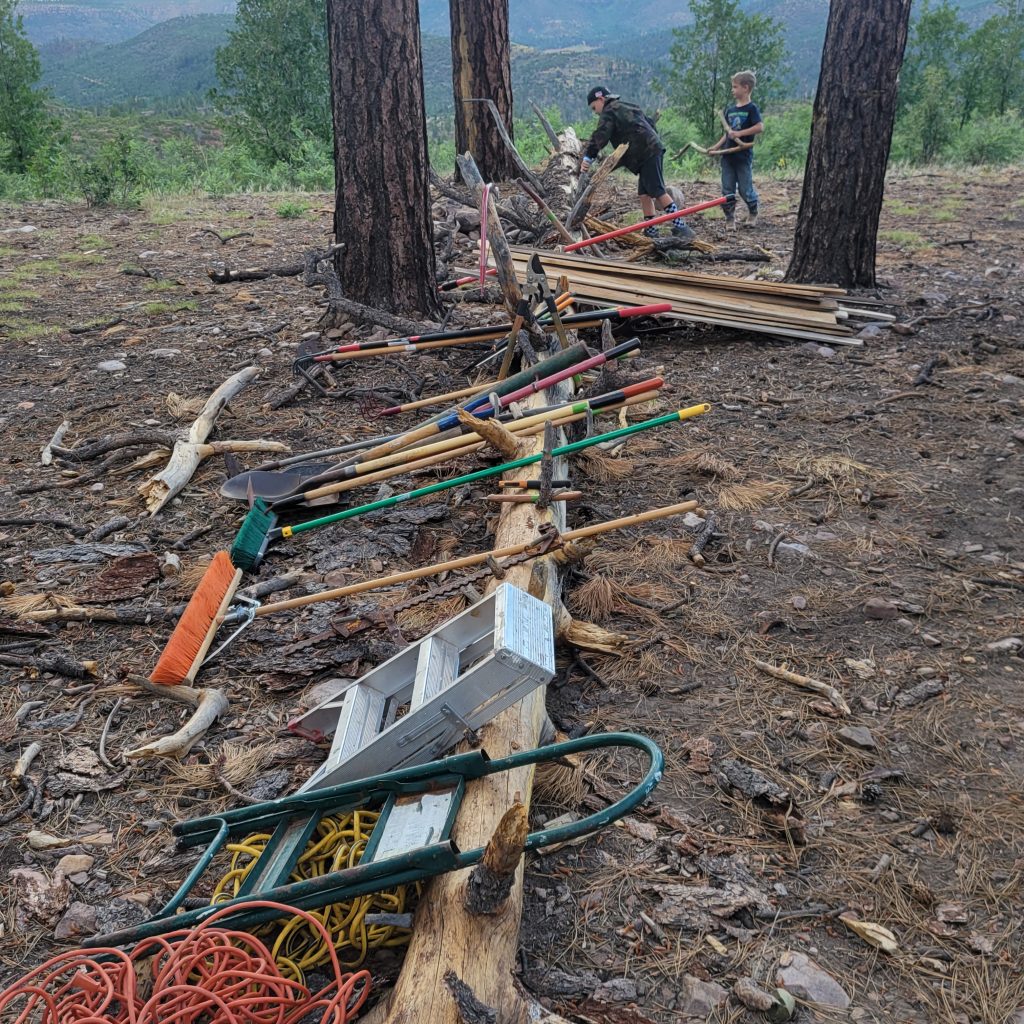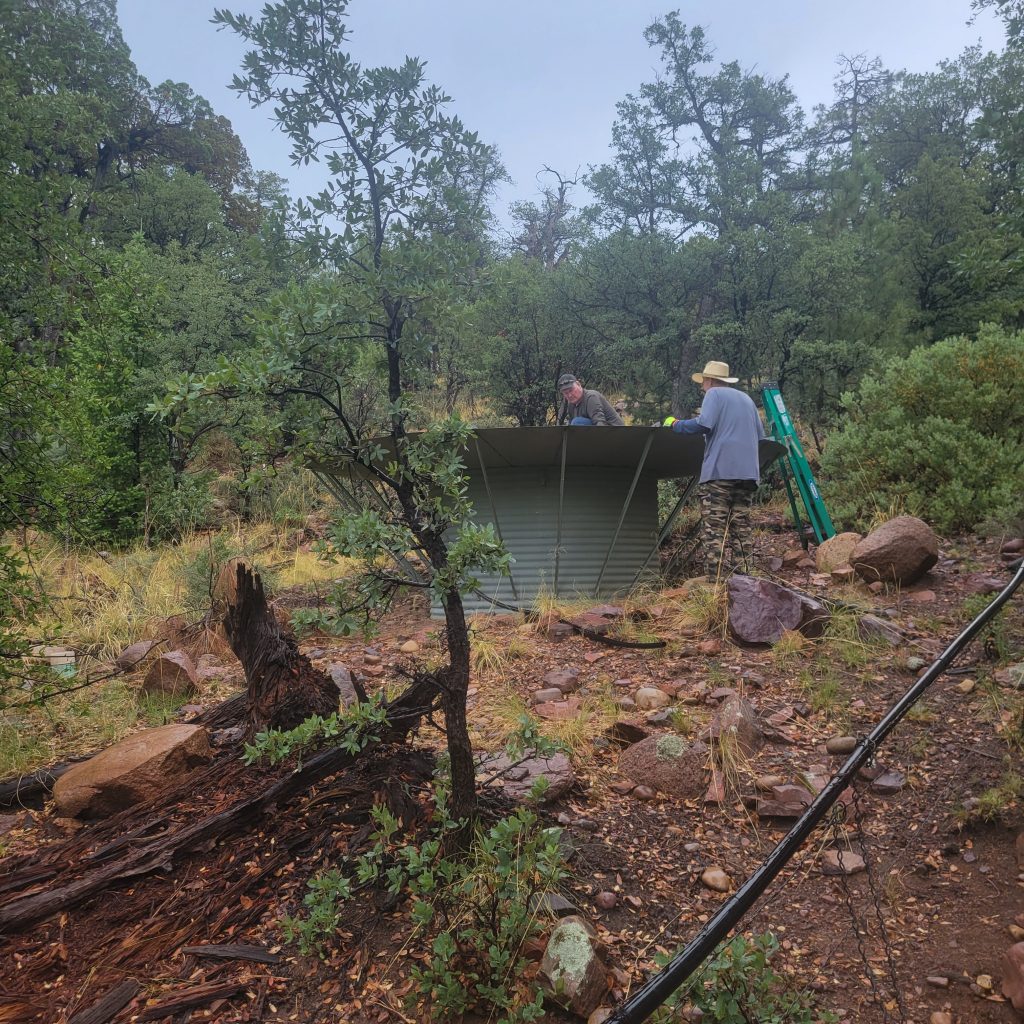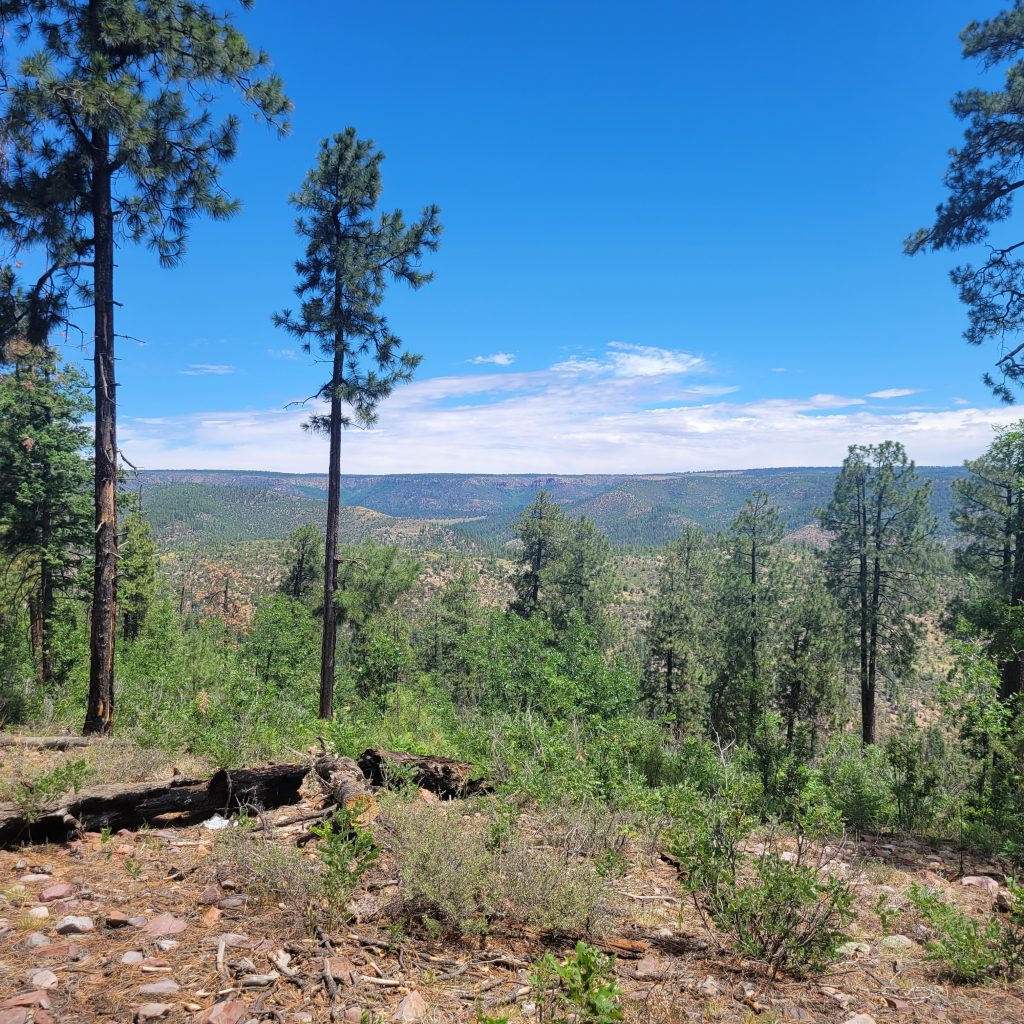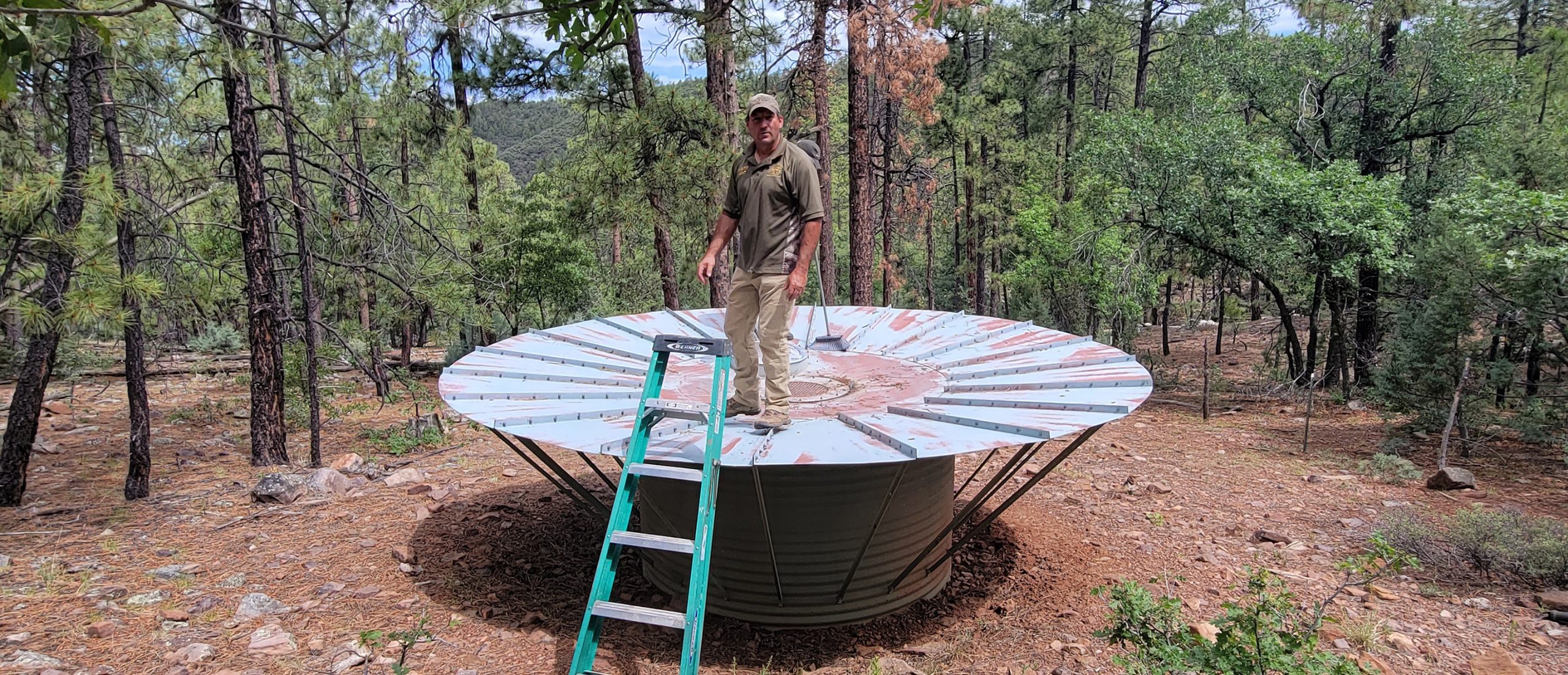Sweat Equity: Arizona Volunteers Improve Habitat on Public Land
Volunteers from the NWTF, the Arizona Mule Deer Organization, Best of the West and Arizona Game and Fish Department congregated at the game management unit for three full days of camaraderie and hard work for the overall common good.
Water in the West – its quantity and quality are a big topic, not just for people but for agriculture and wildlife too. Arizona is no exception. Much of the state is in moderate to severe drought conditions while some areas are even classified as extreme or exceptional drought. To ensure wild turkeys and many other game and non-game species have a leg up while the water is down, state and federal agencies have installed trick tanks on public lands across the state.
“Trick tanks are manmade water catchment systems that contain rainwater and prevent it from evaporating,” said Roy Crain, NWTF Arizona State Chapter President. “During a prolonged drought, retaining every bit of rainwater for the wildlife is crucial. This not only ensures we can conserve these species we care about today, but it also ensures those after us have future opportunities to go afield too.”
While there are many trick tanks on public lands across the state, they are often in remote areas that are hard to access and subsequently hard to maintain. Crain and about 30 other determined volunteers recently went deep into Game Management Unit 23 to repair and maintain these tanks for the native wildlife.

Volunteers from the NWTF, the Arizona Mule Deer Organization, Best of the West and Arizona Game and Fish Department congregated at the game management unit for three full days of camaraderie and hard work for the overall common good. Volunteers worked on over a dozen tanks, replacing the umbrella catchment aprons, repairing fencing, removing encroaching trees and even replacing some major components.


“None of this would have been possible without AZGFD Game Manager Seth Sheer getting the NWTF and other NGOs involved,” Crain said. “The Arizona State Chapter is always willing to step in in the name of conservation, and we are looking forward to working on more grassroots projects like these.”
Many game species will benefit from the volunteers’ work, including wild turkeys, mule deer, white-tailed deer, bears, mountain lions and more. An array of non-game species will benefit as well.
About 30 miles down the road from GMU 23, as a crow flies, the NWTF is working on a landscape scale to improve water quality and quantity for millions of Arizonans, all while improving wildlife habitat and forest health.
“Our new agreement with the Coconino National Forest for the General Springs Project will conserve and enhance roughly 3,500 acres while also providing protection for the East Clear Creek Watershed and water pipeline, which supplies the town of Payson, Arizona with drinking water and is valued at over $300 million in water and hydroelectric infrastructure,” said Chuck Carpenter, NWTF district biologist for Utah, Colorado, New Mexico and Arizona. “The agreement also provides other important infrastructure protection, including powerline corridor protection and roadside thinning.”

Whether it is dedicated volunteers putting in a day’s worth of hard work or creating partnerships that will make a landscape-scale impact, the NWTF and its dedicated volunteers work in all capacities to ensure mission delivery.
